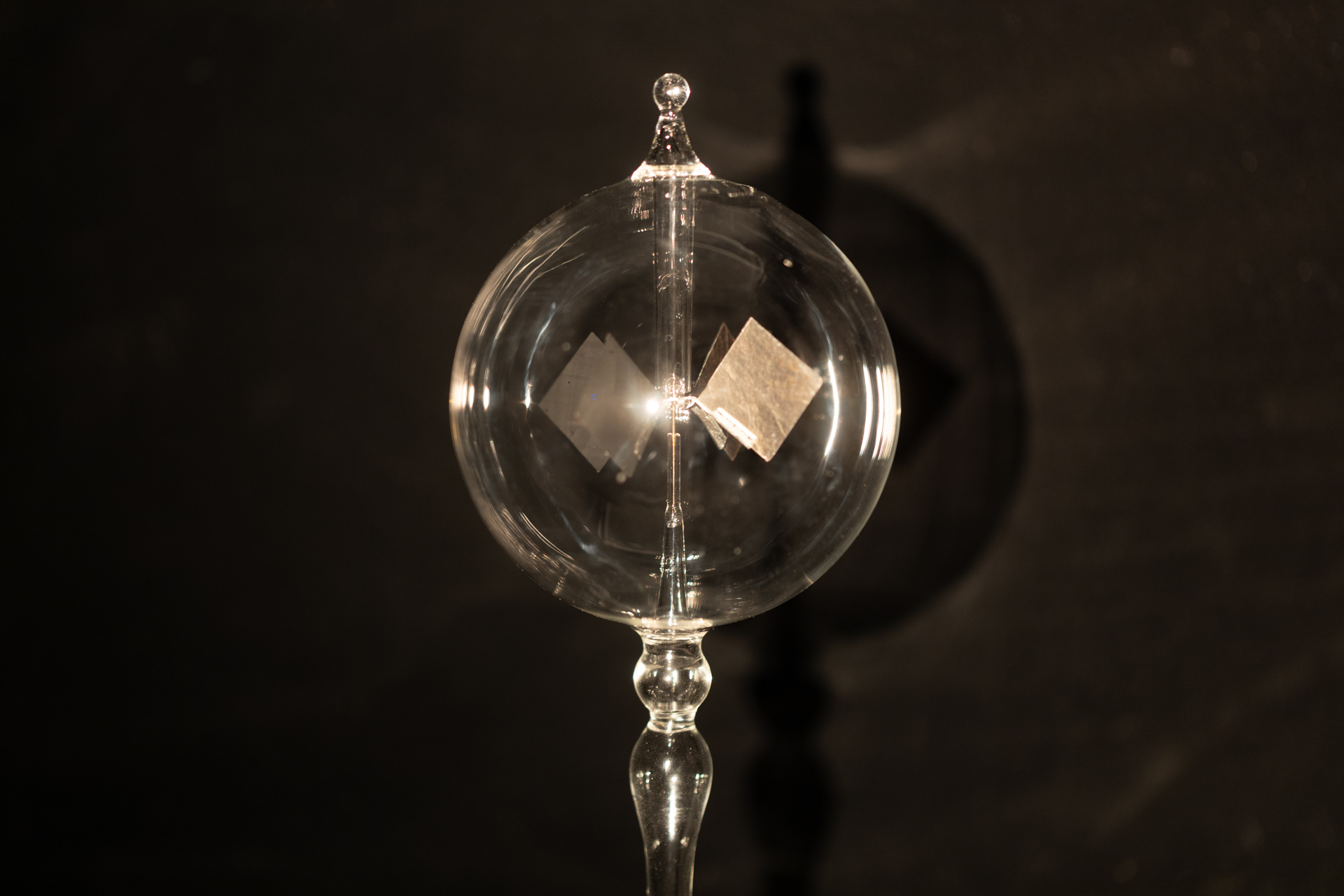
I was recently struck by an unexplained desire to craft a classic scientific object, a “radiometer”. It was first created and demonstrated in the 1800s as scientists explored the fundamental elements of nature, especially the behaviors of atoms and molecules. The periodic table and the ideal gas law that we learned in school were figured out during this time through many careful experiments.
Among the experiments was one performed by William Crookes while trying to isolate and identify his newly discovered element Thallium. To make high-precision measurements of mass, he avoided the disturbances of air currents on his balance by putting it in a vacuum. But he found that the readings were still varying, depending on whether the balance was in sunlight or not. With his laboratory skills, he crafted a device to demonstrate the effect, a device that today is known as a “Crookes radiometer”, or “light mill”. It is a delicately balanced arrangement of vanes, black on one side, white or silver on the other side, suspended in a glass vacuum tube. Crookes discovered that when the vanes were illuminated by sunlight, they moved, rotating around the balance point, demonstrating that light induced some force to cause the rotation, and that force was also responsible for the variations in his mass measurements. See this account for a wonderful history of the radiometer. There is still some scientific uncertainty about how exactly it works!
My fascination with the Crookes radiometer began as a child when I first saw one spinning in a store window. My dad was with me and was able to explain it to the satisfaction of his 8-year-old son: “The light hits the white side and bounces off, but it gets absorbed by the black side and the difference of force makes it move”.
I immediately set out to make one for myself. With black and white construction paper I made some vanes and taped them to a pencil. I found a sunny spot in our backyard and planted the sharp end of the pencil into the ground. Nothing. No motion. It was quite a disappointment.
When I later explained to Dad that my radiometer didn’t work, he told me that the force of light is very small, and for it to spin required a very delicate balance and removing the air from around the vanes, which was why the radiometer at the store was inside a glass bulb. It explained why my backyard radiometer had failed, but it didn’t quench my curiosity.
Continue reading